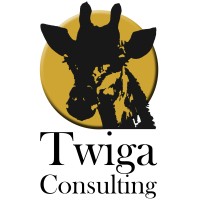Why Integration Matters: Making Payroll, HR, and Finance Systems Work Together
In today’s fast-paced business environment, efficiency and compliance are essential. Yet many companies still struggle with disconnected payroll, HR, and finance processes that create duplication, errors, and unnecessary risks. In 2024–2025, with tighter labour laws and evolving business requirements, integration across these functions has become more than a convenience, it’s a necessity. Aligning payroll, HR, and finance ensures accurate data, compliance with South African regulations, and smoother operations that allow leaders to focus on growth.
Eliminating Manual Errors & Data Duplication
One of the biggest challenges businesses face is managing information across multiple disconnected processes. For example, HR might update an employee’s contract, but finance may not adjust payroll in time, resulting in overpayments, underpayments, or even disputes. When payroll, HR, and finance are aligned, updates flow consistently across teams, whether it’s a change in tax status, benefits, or working hours, eliminating duplication and reducing costly mistakes. Employees also gain greater trust in the system when they know their pay and benefits are being handled accurately and on time.
Improved Compliance & Audit-Readiness
South African companies face complex compliance requirements, from labour law and Employment Equity to B-BBEE reporting and tax submissions. When payroll, HR, and finance processes are siloed, critical updates can be missed, exposing businesses to penalties or legal risks. Integrated processes provide a single version of the truth and create a clear audit trail, making it easier to demonstrate compliance during inspections or audits. This alignment also reduces risks of fraud, such as “ghost employees” or duplicate payments, by ensuring all data is consistent and transparent.
Time & Cost Savings Through Efficiency
Manual reconciliations and correcting payroll errors drain valuable time from HR and finance teams. By integrating these functions, businesses reduce repetitive administrative tasks and ensure that data flows smoothly between teams. This efficiency not only cuts down on labour costs but also prevents unnecessary expenses tied to rework, disputes, and compliance fines. For growing companies, these savings create the capacity to invest in strategic initiatives rather than fixing preventable errors.
Better Decision-Making with Aligned Insights
When payroll, HR, and finance are disconnected, decision-makers often rely on incomplete or outdated data. Integrated processes, however, allow leaders to view workforce and financial information side by side. For example, payroll costs can be directly linked to workforce planning, absenteeism trends, or overtime usage, giving leaders a clearer picture of overall business performance. With reliable data, decisions are more accurate, timely, and aligned with organizational goals.
Enhanced Employee Experience
Integration also directly impacts employees. When HR and payroll systems are aligned, staff enjoy faster issue resolution, accurate payslips, and better transparency on benefits and leave balances. Delays or mismatches between systems often lead to frustration, mistrust, and even higher turnover. By ensuring accuracy and consistency, businesses strengthen employee satisfaction and retention—a critical factor in today’s competitive talent market.
Scalability and Adaptability
As regulations and workforce needs evolve, companies must be able to adapt quickly. Integrated HR, payroll, and finance processes allow businesses to scale without overwhelming administrative teams. When labour laws change, updates can be applied consistently across all functions, ensuring compliance while minimizing disruption. For businesses preparing for long-term growth, this adaptability is key to building resilience and staying ahead of regulatory shifts.
In 2025, integration between payroll, HR, and finance is no longer optional, it’s an essential step for reducing inefficiencies, ensuring compliance, and improving both business and employee outcomes. By aligning these critical functions, companies can save time, prevent errors, and gain valuable insights that support smarter decision-making. At Twiga Consulting, we help organizations streamline their payroll, HR, and labour law processes so they can operate with confidence and focus on growth.
The insights shared in this article are based on recent industry trends and analyses from leading sources. BusinessTech South Africa (2024) – Payroll and Compliance Risks in Disconnected Systems, ITWeb South Africa (2024) – Efficiency Gains in HR and Finance Alignment, PwC South Africa (2025) – HR and Payroll Trends in a Changing Market, BBrief South Africa (2024) – The Rising Importance of Integrated Workforce Management, Paychex Global Report (2025) – Workforce Data and Decision-Making.

